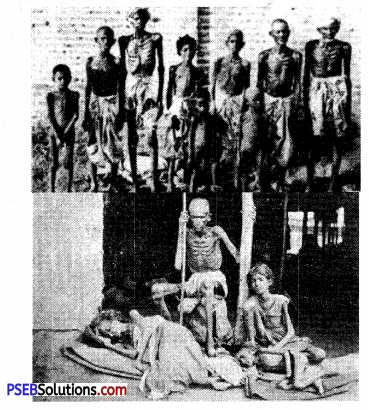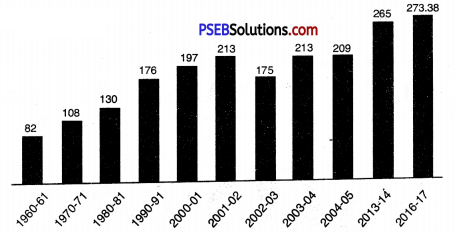Punjab State Board PSEB 9th Class Social Science Book Solutions History Chapter 8 Social History of Clothing Textbook Exercise Questions and Answers.
PSEB Solutions for Class 9 Social Science History Chapter 8 Social History of Clothing
SST Guide for Class 9 PSEB Social History of Clothing Textbook Questions and Answers
I. Multiple Choice Questions :
Question 1.
The Cotton cloth is made up of
(a) Cotton
(6) Animal Skin
(c) SilkWorms
(d) Wool.
Answer:
(a) Cotton.
Question 2.
Who thought of the artificial fibre first?
(a) Marie Curie
(b) Robert Hook
(c) Loius Subab
(d) Lord Curzon.
Answer:
(b) Robert Hook.
Question 3.
In which century did the people of Europe wear clothes according to their social status, class and gender?
(a) 15th Century
(b) 16th Century
(c) 17th Century
(d) 18th Century.
Answer:
(d) 18th Century.

Question 4.
The traders of which country began to import the Indian ‘Chintz’ (Chheent) cloth?
(a) China
(b) England
(c) Italy
(d) France.
Answer:
(b) England.
II. Fill in the blanks :
Question 1.
Archaeologists found the needles of ivory near ___________
Answer:
kostyonki
Question 2.
Silkworms are nurtured on ___________ trees.
Answer:
mulberry
Question 3.
The remains of ___________ clothes have been found in Egyptian, Babylonian and Indus Valley Civilizations.
Answer:
woollen
Question 4.
Industrial Revolution began in ___________ continent.
Answer:
Europe

Question 5.
Swadeshi Movement began in ___________ A. D.
Answer:
1905.
III. Match the Columns:
Question 1.
|
A
|
B
|
| 1. Partition of Bengal |
(i) Rabindranath Tagore |
| 2. Silk Clothes |
(ii) China |
| 3. National Anthem |
(iii) 1789 |
| 4. French Revolution |
(iv) Mahatma Gandhi |
| 5. Swadeshi Movement |
(v) Lord Curzon. |
Answer:
| A |
B |
| 1. Partition of Bengal |
(v) Lord Curzon. |
| 2. Silk Clothes |
(ii) China |
| 3. National Anthem |
(i) Rabindranath Tagore |
| 4. French Revolution |
(iii) 1789 |
| 5. Swadeshi Movement |
(iv) Mahatma Gandhi |
IV. Difference between:
Question 1.
Woollen Cloth and Silk Cloth.
Answer:
Woollen Cloth and Silk Cloth.
- Woollen Cloth: Wool is made of fibre which is made up of particular cells of the skin. Wool is taken from sheep, yaks, goats, rabbits, etc. Meriho wool is considered the best wool. The remains of woollen clothes were found from the Egyption, Babylonian and Indus Valley Civilizations. It refers that people also wore woollen Clothes.
- Silk Cloth: Silk Cloth is made from the fibres prepared by silkworms. Actually, a silkworm prepares a cocoon for its security which is made of its Saliva, Silkthread is prepared from this cocoon. Mostly silkworms are nurtured on mulberry trees. China was the first country to develop the technique of making Silk Cloth.

Question 2.
Cotton Cloth and Artificial Fibre.
Answer:
Cotton Cloth and Artificial Fibre.
- Cotton Cloth. Cotton cloth is made up of Cotton. Indians are wearing cotton clothes since ages. There are some historical evidences that reveal us that people in olden times were cotton clothes. Many cotton clothes have been found while excavating the sites of Individually civilisation. Rigvedic Hymns also refer to cotton.
- Artificial Fibre. An Englishman, Robert Hook, thought of making artificial fibre. Later on, a french scientist also wrote about it, but did not give it a material shape. In 1842, another Englishman Louis Subab invented a machine to make cloth from artificial fibre. Artificial fibre, mulberry, rubber, alcohol, fat, raisins and some other vegetations are used to prepare artificial fibre. Cotton is widely used in India and Terrycot is made from polyster.
V. Very Short Answer Type Questions
Question 1.
What was used by human beings to cover their bodies in the primitive age?
Answer:
Early humans used leaves, bark of trees and animal skin to cover their bodies.
Question 2.
How many types of fibres are used to make the clothes?
Answer:
Four types of fibres are used to make the clothes-Cotton, Woollen, silky and artificial.
Question 3.
Which type of sheep is to be the wool considered to be the best for woo!?
Answer:
Merino Sheep.

Question 4.
In which country did women first raise their voice to wear clothes of their choice?
Answer:
France.
Question 5.
From which country England used to import cotton before industrial Revolution?
Answer:
India.
Question 6.
Name the Indian leader who initiated the Khadi movement.
Answer:
Mahatma Gandhi.
Question 7.
The people of Namdhari Sect wear clothes of which colour.
Answer:
White colour.
VI. Short Answer Type Questions
Question 1.
Why did human beings feel the need of clothing?
Answer:
Clothing of a person shows his mental, intellectual and economic state. Clothing is not only used to cover the body but it also indicates about one’s cultural and social status in society. That’s why humans felt the need of clothing.
Question 2.
How is silk cloth prepared?
Answer:
Silk cloth is made from the fibres prepared by Silkworms. Actually, a silkworm prepares a cocoon for its security which is made of its Saliva. Silk thread is prepared from this cocoon. Mostly silkworms are nurtured on Mulberry trees. China was the first country to develop the technique of making ‘Silk Cloth.’

Question 3.
What was the impact of Industrial Revolution on Clothing?
Answer:
During eighteenth-nineteenth centuries, Industrial Revolution exerted a great impact on the social, political and economic structure of the whole world. It led to the change in ideas and life style of the people and consequently change came in the clothing of the people.
Due to the cloth production on machines, cloth became cheap and much more cloth came in the market. As a results plenty of cloth with various designs was available at affordable price. That’s why people started wearing more clothes. Before this, cloth was expensive and people wore less number of clothes.
Question 4.
How did world wars influence the clothing of women?
Answer:
In twentieth century, many European women stopped wearing luxurious clothes because upper-class women mixed with other classes. Consequently, social barriers were eroded and women began to look similar. Clothes got shorter during the First World War (1914-1918) our of practical necessity. By 1917, lots of women in Britain were employed in ammunition factories. They wore a working uniform of blouse and trousers. Bright colours faded from sight and only sober colours were worn as the war dragged on.
Therefore, clothes became plainer and simpler. Skirts became shorter. Gradually, trousers became a vital part of Western women’s clothing, giving them greater freedom of movement. By the twentieth century, new schools for children emphasised the importance of plain dressing and discouraged ornamentation. Gymnastics and games entered the school curriculum for women. As women took to sports, they had to wear clothes that did not hamper movement. Whey they went out to work they needed clothes that were comfortable and convenient.
Question 5.
What do you know about Swadeshi Movement?
Answer:
The core philosophy was to use indigenous coarse cloth, shoes and other articles as part of self-respect and also to hit British economic interests. This gave a fillip to the indigenous industries and there was a significant revival in handlooms, silk-weaving and other traditional artisan crafts.

Question 6.
Write a note on the efforts made for the preparation of the national dress.
Answer:
By the end of 19th century, national consciousness started spreading among Indians. The Indians started thinking about those cultural symbols which could express national unity. Artists started finding the national art style. Poets wrote national songs. For the symbolic identity of the Nation, many scholars emphasized on developing the national dress. During the decade of 1870, Tagore family of Bengal started preparing the designs of national dress for males and females. Rabindranath Tagore suggested that instead of mixing the Indian and European dresses, the designs of Hindu and Muslim clothes should be mixed. In this way, Achkan (a long buttoned coat) was considered the most suitable dress for the Indian men.
Efforts were made to prepare a design while keeping in mind the traditions of different regions. At the end of the decade of 1870, Jnanadanandini Devi, wife of Satyendranath Tagore, the first Indian ICS officer, returned from Bombay to Calcutta. She adopted the Parsi style of wearing the Sari pinned to the left shoulder with a brooch and worn with a blouse and shoes. This was very quickly adopted by Brahmo. Samaji women. It was given the name of Brahmika Sari. This style gained acceptance before long among Marathis and Uttar Pradesh Brahmas, as well as non-Brahmas.
But these efforts were not completely successful. Even today, the females of Gujarat, Kerala and Assam wear different types of sarees.
Question 7.
Write a note on the clothing of Punjabi women.
Answer:
In Punjab, men wore Kurta-Pyjama and women wore suit i.e. Salwar Kameez. Most of the males wore turbans on their heads. There was a time when they wore Turre Wali Pagri and even starched Pagris. Earlier they wore single layered Pagris but now it has changed into double on centre stiched Pagri.
People wear red, pink and orange turbans at the time of marriage. White or light coloured turbans are used at the time of mourning. ‘Chadras’ and ‘Kurtas’ have been replaced wih Pant-Shirt with different types of shoes.
Earlier Punjabi women wore long Kurtas which is now changed to Salwar Kameez. They cover their head with dupatta. They also use dupatta for ‘Ghunghat’. To beautify the dupatta, embroidery, mirror work, gotta and Mukaish are also used. Even suits are embroided and painted in different beautiful designs. Urban women wear suits and sarees with blouse. They also wear ornaments such as Mohran, Tikka, Jhunks, Nose Pin, Rings, Earrings, Bangles, Hair clips etc. Now, under the influence of western cutlure, they have started wearing jeans and tops.
VII. Long Answer Type Questions
Question 1.
Write a note on the fibres used for making clothes.
Answer:
With the invention of new fibres, people started different types of clothes. Due to change in weather and under the influence of cultural, social, political, economic and religious trends, there came continuous changes in the clothing of people which is continued even till today.
To know about the history of clothing, it is necessary to know abo different fibres whose description is given below :
- Woollen Cloth: Wool is made of fibre which is made up of particular cells of the skin. Wool is taken from sheep, yaks, goats, rabbits, etc. Merino wool is considered the best wool. The remains of woollen clothes, were found from the Egyption, Babylonian and Indus Valley civilizations. It refers that people also wore woollen clothes.
- Silk Cloth: Silk cloth is made from the fibres prepared by silkworms. Actually, a silkworm prepares a cocoon for its security which is made of its saliva, silkthread is prepared from this cocoon. Mostly silkworms are nurtured on mulberry trees. China was the first country to develop the technique of’making silk cloth.
- Cotton Cloth: Cotton cloth is made up of cotton. India are wearing cotton clothes since ages. There are some historical evidences which reveal us that people in olden times were cotton clothes. Many cotton clothes have been found while excavating the sites of Indus. Valley civilisation. Rigvedic Hymns also refer to cotton.
- Artificial Fibre: An Englishman, Robert Hook, thought making artificial fibre. Later on, a French scientist also wrote about it, but did not give it a material shape. In 1842, another Englishman Louis Subab invented a machine to make cloth from artificial fibre. Artificial fibre, mulberry, rubber, alcohol, fat, raisins and some other vegetations are used to prepare artificial fibre. Cotton is widely used in India and Terrycot is made from polyster.

Question 2.
What were the impacts of Industrial Revolution on the clothing of common people? Discuss in detail.
Answer:
Dining eighteenth-nineteenth centuries, industrial revolution exerted a great impact on the social political and economic structure of the whole world. It led to the change in ideas and life style of the people and consequently change came in the clothing of people.
Due to the cloth production on machines, cloth became cheap and much more cloth came in the market. As a result, plenty of cloth with various designs was available at affordable price. That’s why people started wearing more clothes.
Industrial Revolution had following impacts on the clothing of common people.
1. Impact on the Clothing of Common People. In the 18th century, people wore clothes according to their social status, class or gender. There was a great difference between the wearing style of males and females. Women wore skirts with high heel sandals. Men wore nakties. The clothing pattern of upper classes was different from that of the common people. But the French Revolution of 1789 A.D. ended all the priviledges of the Nobles or aristocrats. Consequently, every one started wearing colourful clothes. French people began to wear red cap as a symbol of liberty. Thus colourful clothes became fashionable everywhere in the world.
2. Impact on the Clothing of Women. In the European countries, from childhood, girls were tightly laced up and dressed in stays. The effort was to restrict the growth of their bodies, contain them with small moulds. Tightly laced, small-waisted women were admired as attractive, elegant and graceful.
(а) Clothing thus played a part in creating the image of frail, submissive Victorian women.
(b) But the changes related to clothing of women were not accepted.
(c) Around 1830, many women organizations, started demanding democratic rights for women. With the spread of the suffrage movement, clothing reforms started in the 13 British colonial of America.
(d) Press and literature highlighted the wrong effects of tight clothing and diseases caused by them.
(e) Many women organisations in America criticised the traditional
clothing because they believed that if clothes were comfortable and convenient, then women could work, earn their living and become independent.
(f) In the 1870s, the National Woman Suffrage Association headed by Mrs. Stanton, and the American woman suffrage association dominated by Lucy Stone both campaigned for dress reform.
Question 3.
Write down the impacts of the Swadeshi Movement on the clothing of Indian People.
Answer:
The Swadeshi movement had its genesis in the anti-partition movement which was started to oppose the British decision to partition Bengal. The government’s decision to partition. Bengal had been made public in December 1903. An immediate and spontaneous protest followed. During the first two months following the announcement, 500 protest meetings were held in East Bengal alone. This was the phase, 1903 to mid 1905, when moderate techniques of petitions, memoranda, speeches, public meetings and press campaigns held full away. The government remained unmoved and the decision to partition Bengal was announced on 19 July, 1905. The Swadeshi movement now galvanized into a powerful national movement under the leadership of Lala Lajpat Rai (Punjab), Bipin Chandra Pal (Bengal) and B. G. Tilak (Maharashtra). On 7th August meeting, the famous boycott resolution was passed. Boycott of Manchester cloth and Liverpool salt was urged. Among the chants of Bande Mataram, huge bonfires of foreign cloth was lit; people voluntarily gave away foreign clothes, shoes, liquor etc. to Congress workers. The Calcutta’s Collector of Customs in September 1906 noted a 22% fall in the quantity of imported cotton piece goods, 44% in cotton twists and yarns.
When Mahatma Gandhi gave stress on using Khadi, many Indians started boycotting the British cloth and it lead to the popularisation of Khadi. Khadi became the symbol of national unity.

Question 4.
Write a detailed note on the clothing of the Punjabi people.
Answer:
In Punjab, men wore Kurta-Pyjama and women wore suit i.e. Salwar Kameez. Most of the males wore turbans on their heads. There was a time when they wore Turre Wali Pagri and even starched Pagris. Earlier they wore single layered Pagris but now it has changed into double on centre stiched Pagri.
People wear red, pink and orange turbans at the time of marriage. White or light coloured turbans are used at the time of mourning. ‘Chadras’ and ‘Kurtas’ have been replaced wih Pant-Shirt with different types of shoes.
Earlier Punjabi women wore long Kurtas which is now changed to Salwar Kameez. They cover their head with dupatta. They also use dupatta for ‘Ghunghat’. To beautify the dupatta, embroidery, mirror work, gotta and Mukaish are also used. Even suits are embroided and painted in different beautiful designs. Urban women wear suits and sarees with blouse. They also wear ornaments such as Mohran, Tikka, Jhunks, Nose Pin, Rings, Earrings, Bangles, Hair clips etc. Now, under the influence of western cutlure, they have started wearing jeans and tops.
PSEB 9th Class Social Science Guide Social History of Clothing Important Questions and Answers
Multiple Choice Questions :
Question 1.
Those laws are known as ___________ which tried to control the behaviour of those considered socially inferior, preventing them from wearing certain clothes.
(a) Sumptuary laws
(b) Corn laws
(c) Cloth laws
(d) Red Cap laws.
Answer:
(a) Sumptuary laws.
Question 2.
___________ was a type of fur which was wore by Royal people.
(a) Sumptuary
(b) Ermine
(c) Corn
(d) Corset.
Answer:
(b) Ermine.
Question 3.
___________ was the political symbol of Red Cap in France.
(a) Symbol of brotherhood
(b) Symbol of Equality
(c) Symbol of liberty
(d) Symbol of economic equality.

Question 4.
___________ was a lady wear, meant to confine and shap her waist.
(a) Sumptuary
(b) Ermine
(c) Corn
(d) Corset.
Answer:
(d) Corset.
Question 5.
Suffrage movement was launched in ___________
(a) England
(b) Germany
(c) France
(d) U.S.A.
Answer:
(a) England.
Question 6.
Anything essential to maintain life and growth is called
(a) Pableum
(b) Corset
(c) Necessity
(d) Chapkan.
Answer:
(a) Pableum.
Question 7.
___________ was the leader of National Woman Suffrage Association in 1870.
(a) Mrs. Cripps
(b) Mrs. Stanton
(c) Mrs. Stanford
(d) Mrs. Henry.
Answer:
(b) Mrs. Stanton.
Question 8.
___________ was the leader of American woman Suffrage Association during 1860’s.
(a) Mrs. Stanton
(d) Amelia Bloomer
(c) Lucy Stone
(d) Mrs. Stanford.
Answer:
(c) Lucy Stone.
Question 9.
Rational Dress Society started in England in
(a) 1870
(b) 1881
(c) 1876
(d) 1879
Answer:
(b) 1881.
Question 10.
___________ was an Indian cotton cloth printed with design and flowers.
(a) Chintz
(b) Floral
(c) Phenta
(d) Chapkan.
Answer:
(a) Chintz.
Question 11.
___________ was a type of hat.
(a) Chintz
(b) Phenta
(c) Floral
(d) Chapkan.
Answer:
(b) Phenta.

Question 12.
In the year ___________ Europeans were forbidden from wearing Indian clothes at official functions.
(a) 1830
(b) 1834
(c) 1832
(d) 1836.
Answer:
(a) 1830.
Question 13.
___________ was a long button cout considered the most suitable dress for men during the colonial period.
(a) Chintz
(b) Phenta
(c) Chapkan
(d) Corset.
Answer:
(c) Chapkan.
Question 14.
___________ divided Bengal in 1905.
(a) Lord Earnest
(b) Lord Irwin
(c) Lord Curzon
(d) None of these.
Answer:
(c) Lord Curzon.
Question 15.
Gandhiji adopted loins cloth in
(a) Oct. 1920
(6) Sept. 1919
(c) Oct. 1918
(d) Oct. 1921.
Answer:
(d) Oct. 1921.

Question 16.
Who said these words, “the King had enough on for both of us”?
(a) Jawahar Lai Nehru
(b) Mahatma Gandhi
(c) Subhash Chandra Bose
(d) None of these.
Answer:
(6) Mahatma Gandhi.
Fill in the Blanks:
Question 1.
___________ movement is the movement for the rights to vote for women.
Answer:
Suffrage
Question 2.
Chintz was a type of ___________
Answer:
cloth
Question 3.
Lord ___________ partitioned Bengal in 1905.
Answer:
Curzon
Question 4.
___________ was a great supporter of Swadeshi Movement.
Answer:
Mahatma Gandhi
Question 5.
___________ propagated the principles of the Swadeshi Movement through his speeches and newspapers.
Answer:
Bal Gangadhar Tilak.
True/False:
Question 1.
Some men wear Fifty under the Pagri.
Answer:
True
Question 2.
In the rural areas, men used to wear a Parna.
Answer:
True
Question 3.
Achkan is a long buttoned skirt.
Answer:
False

Question 4.
Sumptuary laws were passed in France.
Answer:
True
Question 5.
Industrial revolution first started in England.
Answer:
True
Very Short Answer Type Questions
Question 1.
What were known as sumptuary laws?
Answer:
The laws tried to control the behaviour of those considered socially inferior, preventing them from wearing certain clothes.
Question 2.
What was ermine?
Answer:
A type of fur which was wore by Royal people.
Question 3.
What was the political symbol of Red Cap in France?
Answer:
It was a symbol of liberty.
Question 4.
What was Corset?
Answer:
It was a lady wear, meant to confine and shape her waist.
Question 5.
What were stays?
Answer:
In England, from childhood girls were tightly laced up and dressed in stays. The purpose was to restrict the growth of their bodies.

Question 6.
Where was the Suffrage movement launched?
Answer:
In England.
Question 7.
Who was the leader of National Woman Suffrage Association in 1870?
Answer:
Mrs Stanton.
Question 8.
Who was the leader of American Woman Suffrage Association during 1860?
Answer:
Lucy Stone.
Question 9.
Who was Ameila Bloomer?
Answer:
She was a dress reformer.
Question 10.
When was Rational Dress society started in England?
Answer:
In 1881.

Question 11.
In which country traditional feminine clothing were criticised on a variety of grounds?
Answer:
In America.
Question 12.
What was Chintz?
Answer:
This was Indian Cotton Cloth printed with design and flowers.
Question 13.
Who were first Indians to adopt western-style clothing?
Answer:
Parsis.
Question 14.
What stands for phenta?
Answer:
It was a hat.
Question 15.
When were Europeans forbidden from wearing Indian clothes at official functions?
Answer:
In the year 1830.
Question 16.
Which Governor-General insisted that Indians take their shoes off when they appear before him?
Answer:
Lord Amherst.
Question 17.
What was Chapkan?
Answer:
It was a long button coat considered the most suitable dress for men during the colonial period.

Question 18.
When did Curzon proclaim partition of Bengal?
Answer:
In the year 1905.
Question 19.
How did Gandhi changes his dress in London?
Answer:
He cut of the tuft on his head and dressed in a western suit.
Question 20.
Which type of dress Gandhi followed as a lawyer in South Africa?
Answer:
He wore Western style clothes.
Question 21.
When did Gandhi adopt loins cloth?
Answer:
In October 1921.
Question 22.
Who said “the king had enough on for both of us”?
Answer:
Gandhiji said while entering in Birmingham palace.
Short Answer Type Questions
Question 1.
What were the Sumptuary laws in France?
Answer:
There were different dresses for different sections of society. From 1294 to the time of the French Revolution in 1789, the people of France were expected to strictly follow what were known as ‘sumptuary laws’. The laws tried to control the behaviour of those considered social inferiors, preventing them from wearing certain clothes, consuming certain foods and beverages and hunting in certain areas. In medieval France, the items of clothing a person could purchase per year was regulated, on the basis of income and social rank. The material to be used for clothing was also legally prescribed. Only royalty could wear expensive materials like ermine and fur or silk, velvet and brocade. Other classes were prevented from clothing themselves with materials that were associated with the aristocracy.

Question 2.
Give any two examples of the ways in which European dress codes were different from Indian dress codes.
Answer:
As we know that dress is the part of a culture. For this reason clothings convey certain meaning through its style and wearing. When European traders first began visiting India, they were distinguished from the Indian ‘turban wearers’ as the ‘hat wearers’. These two headgears not only looked different, they also signified different things. The* turban in India was not just for protection from the heat but was a sign of respectability, and could not be removed at will. In the Western tradition, the hat had to be removed before social superiors as a sign of respect. This cultural difference created misunderstanding. The British were often offended if Indians did not take off their turban as a mark of respect when they met colonial officials. Many Indians wore the turban to assert their regional or national identity.
Another paradox related to the wearing of shoes. At the beginning of the nineteenth century, it was customary for British officials to follow Indian etiquette and-remove their footwear in the courts of ruling kings or chiefs. Some British officials also wore Indian clothes. But in 1830, Europeans were forbidden from wearing Indian clothes at official functions, so that their cultural identity was not undermined.
Question 3.
Suggest reasons why women in nineteenth century India were obliged to continue wearing traditional Indian dress even when men switched over to the more convenient Western clothing. What does this show about the position of women in society?
Answer:
It was the fact that women in the 19th century continued wearing Indian dress whereas man switched over to convenient western clothing. This happened only in the upper echelons of society.
Some of the reasons for this are the following :
- In the 19th century, Indian women were confined to the four walls as the purdah system was prevalent. They were required to put on traditional dresses.
- The position of women in the society was very low. Most of them were uneducated and did not attend schools or colleges. Therefore, no need was felt to change their style of clothing.
- On the other hand upper class Indians were western educated and picked up western habits like western style of clothing. Those who were businessmen or officials imitated the British style of clothing for the sake of comfort, modernity and progress.
- The Parsis were the first Indian to adopt western style of clothing as it was a mark of modernity, liberalism and progress. Some people had two sets of cloths. They put on western clothes for offices and business work and Indian clothes for social functions.
Question 4.
Winston Churchill described Mahatma Gandhi as a ‘Seditious Middle Temple Lawyer now posing as a half naked fakir’. What provoked such a comment and what does it tell you about the symbolic strength of Mahatma Gandhi’s dress?
Answer:
Winston Churchill was an imperialist by nature and believed in the superiority of whitemen. He called Mahatma Gandhi because under Gandhi’s leadership the Congress launched Non-cooperation and Civil Disobedience movement which were aimed at the’British rule. Gandhiji put on western clothes by practising as a lawyer in India and South Africa. Later on, he changed to loin clothes. He did so to identify himself with the peasants of India who were scantily dressed. But Mr Churchill saw it as a sign of inferiority and in order to denegrade called him a half- naked fakir. Churchill could not understand Gandhiji’s depth of love for his countrymen who could not afford full clothes. Gandhiji dress was a sign of simplicity, purity and of poverty of millions of Indian. Even whgn Gandhiji went to England for the Second Round Table Conference in 1931, he refused, to compromise and wore it even before King George V at the Buckingham palace.
Question 5.
What was the impact of the French Revolution on the distinctions created by Sumptuary laws?
Answer:
The French Revolution ended the distinctions created by Sumptuary laws. Both men and women began wearing clothing that was loose and comfortable. The colour of France-blue, white and red-became popular as they were a sign of the patriotic citizen. Other political symbols also became a part of dress. These included red cap of liberty, long trousers and revolutionary cockade pinned on a hat. The simplicity of clothing was meant to express the idea of equality.

Question 6.
Styles of clothing emphasised differences between men and women. Clarify the statement.
Answer:
Its true that the styles of clothing emphasised differences between men and women. Right from the childhood, women in Victorian England were groomed to be docile and dutiful, submissive and obedient. The ideal woman was one who could bear pain and suffering. While men were expected to be serious, independent, strong and aggressive, women were seen as delicate, frivolous, passive and decile.
Norms of clothing reflected these ideals. From childhood, girls were tightly laced up and dressed in stays. The effort was to restrict the growth of their bodies, contain them within small moulds. When slightly older, girls had to wear tight fitting corsets. Tightly laced, small-waisted women were admired as elegant, attractive and graceful. Clothing thus played a part in creating the image of frail, submissive Victorian women.
Question 7.
Many women of Europe believed in the ideals of womanhood. Explain it with the help of an example.
Answer:
There is no denying the fact that many of the European women believed in the ideas of womanhood. The ideals were in the air they breathed, the education they received at school or at home and the literature they read. Right from childhood, they grew up to believe that having a small waist was a duty of woman. For a woman, suffering pain was essential. To be seen as attractive, they had to wear the corset. The torture and pain this inflicted on the body was to be accepted as normal.
Question 8.
According to women’s magazine, low tight dress and corsets caused deformities. What were the views of doctors regarding this?
Answer:
Many women’s magazines wrote about the deformities caused by tight dress and corsets. These deformities are given below :
- Such tight dresses and corsets caused deformities and illness among young girls.
- Such clothing restricted body growth and hampered blood circulation.
- With such clothes, muscles remained under developed and the spine got bent.
Doctors reported that many women were regularly complaining of acute weakness, felt languid and fainted frequently.

Question 9.
The white settlers on the east coast of America, criticised the traditional dresses of women. Why?
Answer:
The white settlers on the east coast of America, criticised the traditional dresses of women on many grounds. They believed that :
- Long skirts swept the ground and collected filth and dirt.
- The skirts were voluminous. They were difficult to handle.
- Skirts hampered the movement of women. They prevented women from working and earning.
They believed that the reform of dress would change the position of women. If clothes were comfortable and convenient, women could wear, earn their living and become independent.
Question 10.
How did the Industrial Revolution in Britain proved disastrous for the Indian clothing industry?
Answer:
Before the industrial revolution in England, India had made cotton cloth was in great demand everywhere. During the seventeenth century, one fourth of the world’s cotton cloth was made in India. In 18th century, only Bengal had 10 lakh weavers. But industrial revolution mechanised the weaving process. Consequently Indian cotton started exporting to England and the products made there started coming to India. Indian cloth was unable to compete the mechanised product and its demand reduced to a great deal. As a result, large number of weavers become unemployed and the cotton textile centres such as Murshidabad, Surat etc. declined.
Long Answer Type Questions
Question 1.
Why did Mahatma Gandhi’s dream of clothing the nation in Khadi appeal only to some sections of Indians?
Answer:
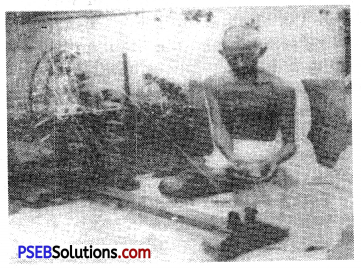
It was Gandhiji’s dream to cloth the whole nation in Khadi but it was not possible for those following his foot steps.
Some others did find it necessary. Here are some examples:
- Nationalists such as Motilal Nehru gave up his expensive. Western-style suits and adopted the Indian dhoti and kurta. But these were not made of coarse cloth.
- Those who had been deprived by caste norms for centuries were attracted to Western dress styles. Therefore, unlike”, Mahatma Gandhi, other nationalists such as Babasaheb Ambedkar never gave up the Western style suit. Many Dalits began to wear three piece suits and shoes and sdcks on all public occasions, as a political statement of self-respect.
- A woman who wrote to Mahatma Gandhi from Maharasthra in 1928 said, “My husband says khadi is costly. Belonging as I do to Maharashtra, wear a sari nine yards long (and) the elders will not hear of a reduction (to six yards.)”
- Other women, like Sarojini Naidu and Kamala Nehru, wore coloured saris with designs, instead of coarse, white homespun.
Question 2.
There came many changes in the designing and material of clothing during the eighteenth century why?
Answer:
During the eighteenth century, there came many changes in the designing and material of clothing due to following reasons.
- The French Revolution ended the Sumptuary Laws.
- The priviledges of Monarchy and the ruling class also ended.
- The colours of France-Red, Blue and white-became the symbols of patriotism and that’s why clothes made up of these colours became popular.
- To give importance to equality, people started wearing normal clothes.
- People had different interests for clothes.
- The sense of beauty among women brought changes in clothing.
- Economic condition of the people also brought changes in clothing.

Question 3.
Give a brief description of the movement started during 1870’s in the U.S.A. for bringing reform in the clothing of women.
Answer:
During the decade of 1870’s ‘National Women Suffrage’ Association and ‘American Suffrage Association’ started a movement for bringing reform in women’s clothing. ‘Stanton’ was the leader of the former organisation and ‘Lucy Stone’ was the leader of the later organisation. The argument was simplify dress, shorten skirts and stop using corsets. On the both sides of Atlantic, there started a movement for rational dress reform. The reformers were unable to get any quick success in changing social values. They had to face ridicule and hostility. Conservatives opposed them every where. They argued that the women who gave up traditional dressing, no longer looked beautiful. They have lost their grace and feminity. Due to the continuous attacks by the conservatives, many women reformers again adopted the traditional clothes.
However, by the end of the nineteenth century, change was clearly visible. Under a variety of pressures, ideals of beauty and styles of clothing were both transformed. People started accepting the ideas of reformers which they had earlier opposed. New values come up with the changing times.
Question 4.
Give a description of the changes came in the clothing of Britain from Seventeenth century till the early years of the 20th Century.
Answer:
Before the seventeenth century, most ordinary women in Britain possessed very few clothes made of flax, linen or wool. They were quite to clean.
Indian Chintzes. After 1600, trade with India brought beautiful, cheap and easy to maintain indian Chintzes. Many European women could buy it easily end now increase the size of their wardrobes.
Industrial Revolution and Cotton Textile. In the nineteenth century, during the industrial revolution, there began mass production of cotton textile in Britain. It was exported to different parts of the world, including India. Now cotton clothes were easily accessible to almost all the groups on Europe. In the beginning of twentieth century, artificial fibres made clothes cheaper still and easier to wash and maintain. Change in the weight and length of clothes. In the late 1870’s heavy, restrictive underclothes, were gradually discarded. Now clothes got lighter, shorter and simpler. Yet untill 1914, clothes were ankle length. By 1915, the length of the skirt was dramatically reduced to mid-calf.
Question 5.
What was the British’s reaction towards Indian turban and Indian’s reaction towards British hat and why?
Answer:
In different cultures, particular items of clothing most often convey contrary meanings. These contrary meanings often leads to misunderstanding and conflict.
Styles of clothing in British India changed through such conflicts. We can take example of the turban and the hat. When European traders starting coming to India, they were easily distinguished with their hat. On the other side Indians were known for their turban or headgear. They both were not only looked different, but they also signified different things. The turban in India was not just for protection from the heat but was a sign of respectability. On contrary to this, in the western, tradition, the hat had to be removed before social superiors as a sign of respect. Their cultural difference creating misunderstanding. The British were often offended if Indians did not take off their turban when they met colonial officials.
Question 6.
Explain the famous case of the ‘Shoe Respect’ rule in 1862 A.D
Answer:
Indians were not allowed to wear the shoes while entering the court. In 1802, a famous case of the ‘Shoe Respect’ rule came forward is Surat Courtroom. Manockjee Cowasjee Entee, an assessor in the Surat Fouzdaree Adawlut, refused to take off his shoes in the court of the sessions judge. The judge insisted that he take off his shoes as that was the Indian way of showing respect to superiors. But Manockjee remained adamant. He was barred entry into the courtroom. He, then, sent a letter of protest to the governor of Bombay.
The British insisted that Indians took off their shoes when they entered a sacred place or home. That’s why they should do so when they enter the courtroom. Then, Indians argued that taking off shoes in sacred places and at home was linked to two different questions. One there was the problem of dirt and filth. Shoes collected dirt and filth. This dirt could not be allowed into clean spaces. Secondly leather shoes and the filth that stuck under it were seen as polluting. But public buildings like the courtroom were different from home. But there was no solution to the problem. However it took many years before shoes were permitted into the courtroom.

Question 7.
Write a note on Swadeshi movement initiated in India.
Answer:
Swadeshi movement was initiated in opposition to the partition of Bengal. Although the sense of nationalism was working behind this but the actual reason was the politics of clothing.
Initially people were appealed that they must boycot every foreign product and the start their own industries for the manufacture of goods such as matchboxes and cigrettes. People of the movement vowed to cleanse themselves of the colonial rule. The use of Khadi was made a patriotic duty. Women were urged to throw away their silk and glass bangles and wear simple shell bangles. Rough homespun was glorified in songs and poems to popularise it. The change of dress appealed largely to the upper castes as poor people could not afford the new products. After 15 years, many among the upper classes also returned to wearing European dress. Its major reason was that it was almost impossible for the Indian goods to compete with the cheap British goods.
Despite its limitations, the experiment with Swadeshi gave Mahatma Gandhi important ideas about using cloth as a symbolic weapon against the British rule.
Question 8.
Explain Mahatma Gandhi’s experiment with clothing.
Answer:
From time to time, Mahatma Gandhi changed his clothing. He was born in a Gujarati Bania family and he usually wore a shirt with dhoti or pyjama and sometimes a coat. In London, he adopted the western suit. On his return, he continued to wear western suits, topped with a turban.
Soon he decided that dressing unsuitably was a more powerful political statement. In Durban in 1913, Gandhiji shaved his head and appeared in a lungi kurta. He stood to protest against the shooting of Indian coal miners. On his return to India in 1915, he adopted a dress like a Kathiawadi peasant. In 1921, he adopted the short dhoti, the form of dress he wore until his death.
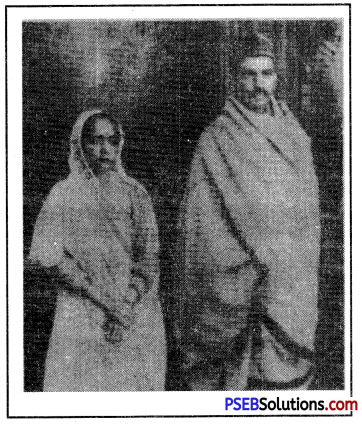
He did not want to adopt this clothing for the rest of his life. He wanted to experiment with a dress for a month or two. But soon he saw this as his duty to the poor and he never wore any other dress. He rejected the well-known clothes of the Indian ascetic and adopted the dress of the poorest Indian. Through this, he became a symbol of nationalism.
![]()
![]()
![]()
![]()
![]()
![]()
![]()
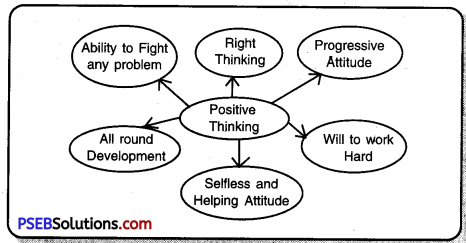
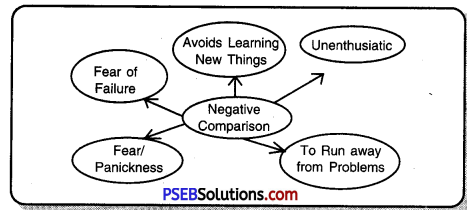
![]()



